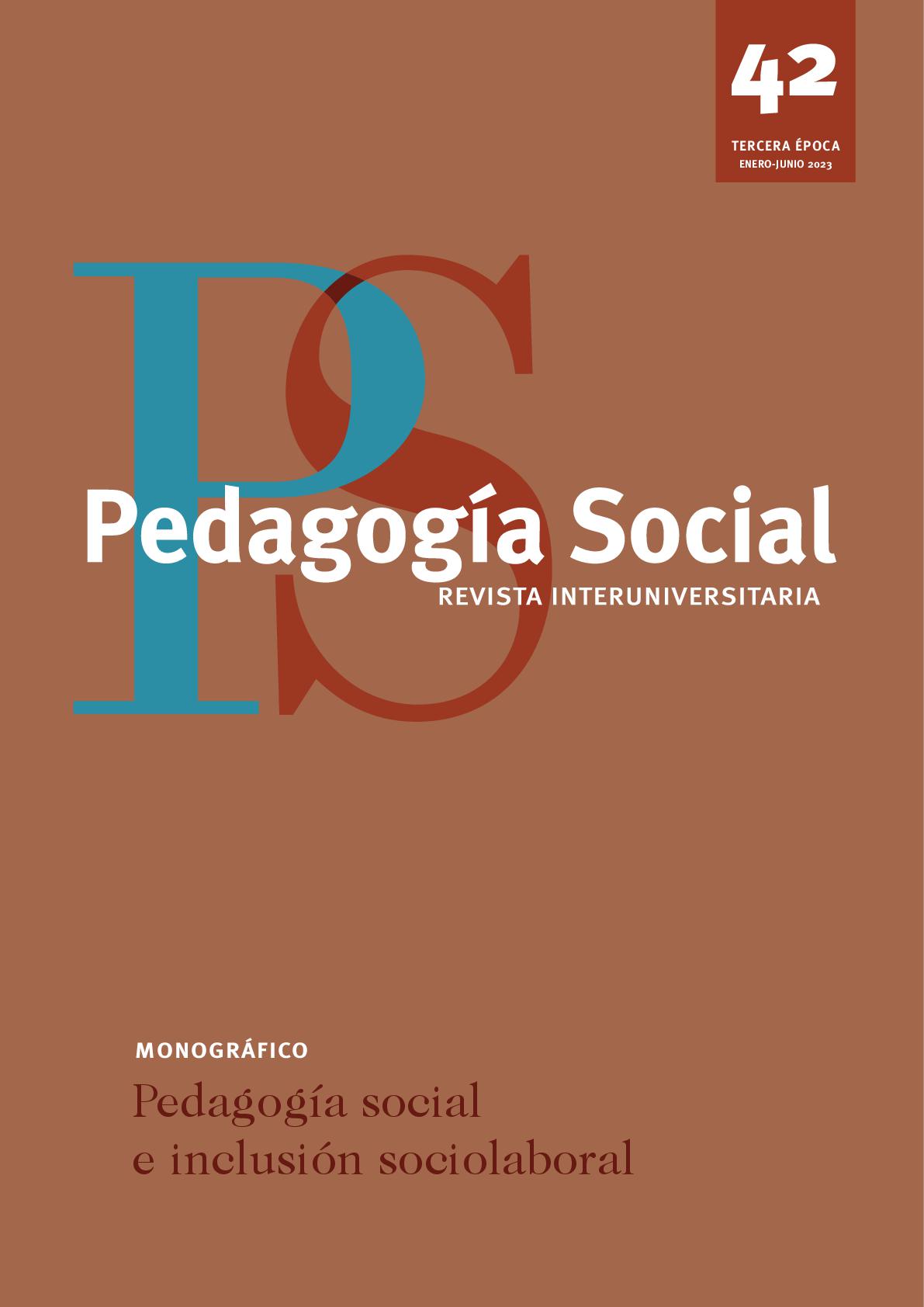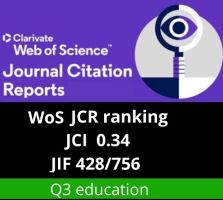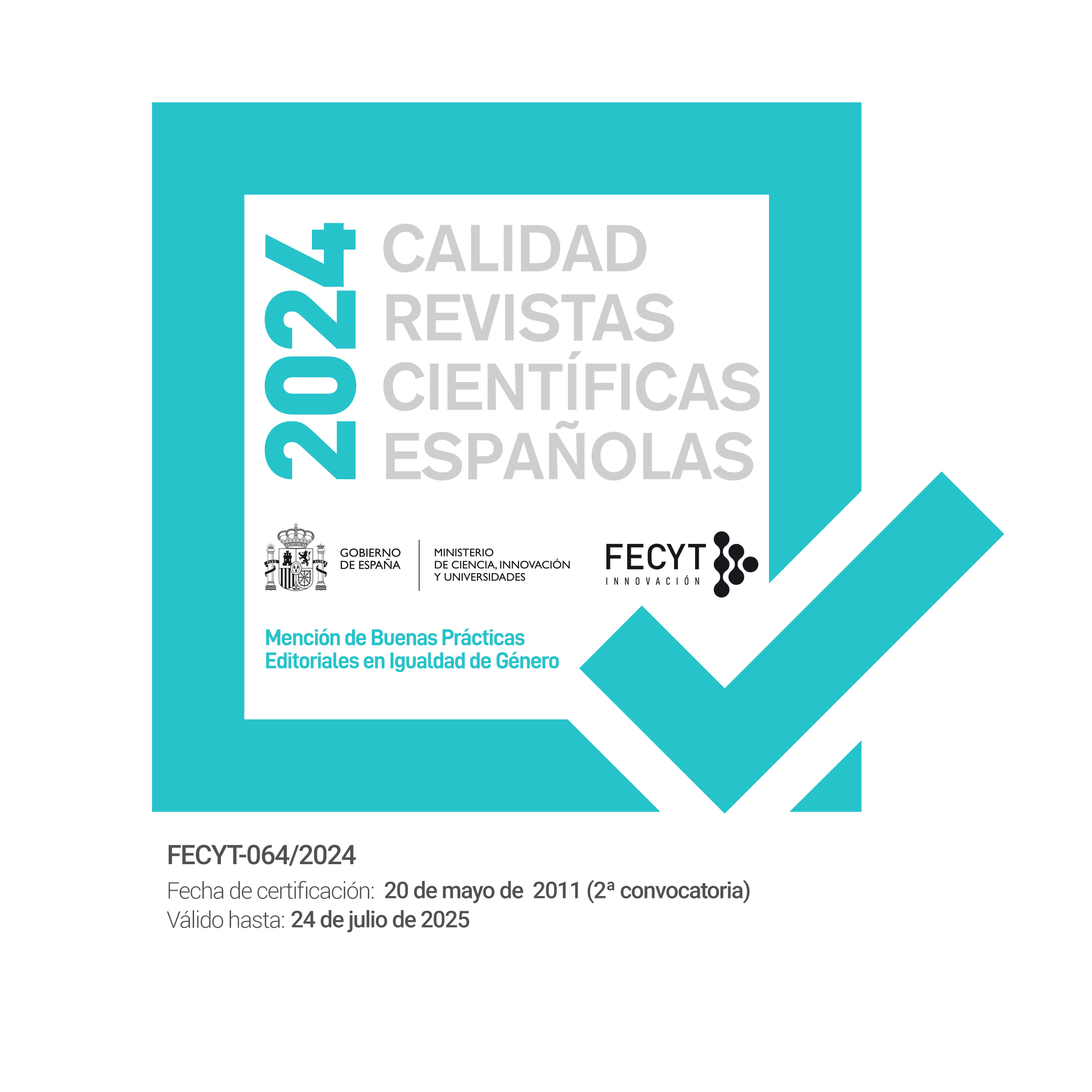Social and labor exclusion: Programs and resources for inclusion
DOI:
https://doi.org/10.7179/PSRI_2023.42.06Keywords:
risks of exclusion, social inclusion, youth, labor market insertion, social exclusionAbstract
This article studies the main resources and programs of socio-labor insertion for the adolescent and youth population, which are implemented by public and private entities in Spain, Colombia, Mexico, and Brazil. For this purpose, the study has a methodological design with a qualitative approach and descriptive scope. The information was collected through the application of four focus groups, one for each country, in which 17 socio-educational agents from public and private entities with socio-labor insertion programs participated. In this way, the information was analyzed by general categories, through a content analysis, which emerged from the discourse of the socio-educational agents who participated in the focus group. These are: a) programs focused on occupational courses for the adolescent and youth population that foster links and emancipation, b) social skills training programs, c) job training programs, d) employability, entrepreneurship and business policy programs, e) orientation and access to rights programs. Also, the needs identified for inclusion were considered as a subcategory, due to the reiteration of this aspect in the discourse of the people participating in the focus groups. The main results of the study show the existence of problems of socio-labor exclusion of the adolescent and youth population in the countries mentioned, such as structural situations and inequity between territories. It also highlights the existence of some programs and resources for socio-labor inclusion with different degrees of scope and impact on the populations, mainly focused on: social or soft skills, youth empowerment, occupational courses, employability, among others. However, it is evident that it is still necessary to continue working jointly with public and private administrations to ensure coverage in socio-educational programs that allow the adolescent and young population to learn about relevant tools and resources for socio-labor insertion.
Downloads
References
Alonso, H., Ruiz, P., Sánchez, J., & Oficialdegui, R. (2014). Exclusión social, medio abierto e incorporación social en la Asociación Bizitegi: Un modelo de intervención socioeducativa en programas de reinserción social desde la pedagogía social comunitaria. Educació Social. Revista d’intervenció Socioeducativa, (57), 48-66. https://dialnet.unirioja.es/servlet/articulo?codigo=7056833
Alvarado, H., & Meresman, S. (2021). Camino al desarrollo local inclusivo. Guía de buenas prácticas para la inclusión social y laboral de personas jóvenes con discapacidad. CEPAL.
Armijo-Cabrera, M. (2018). Deconstructing the notion of inclusion: An analysis of studies, policies and practices in education. Revista Electrónica Educare, 22(3), 1-26. https://doi.org/10.15359/ree.22-3.8
Arrillaga, I., Pisonero, S., Arrillaga, D., Camino, I., Askunce, C., Sáenz, A., & Pérez, Z. (2012). Formación y exclusión social. Documento de síntesis. CIDEC y REAS Euskadi. https://www.economiasolidaria.org/sites/default/files/DOCUMENTO%20DE%20SINTESIS_C20110176.pdf
Calvo, M. (2017). Exclusión social y desempleo [Tesis de maestría, Universidad de Valladolid]. https://uvadoc.uva.es/bitstream/handle/10324/27255/TFM-G730.pdf;jsessionid=741B1FD535007014516B2EEB503B8954?sequence=1
Carmona, G. (2007). Hacia un modelo de inclusión social mediante la intervención socioeducativa y económica. Pedagogía y Saberes, (27), 33-43. https://doi.org/10.17227/01212494.27pys33.43
Egidi, M.J. (2020). “Vivir haciendo fuerza”. Trayectorias socio-laborales de los jóvenes de bajos recursos en Bahía Blanca [Tesis de maestría, Universidad Nacional del Sur]. https://repositoriodigital.uns.edu.ar/bitstream/handle/123456789/5525/EGIDI%20M.J._TESIS..pdf?sequence=5&isAllowed=y
Eurostat. (2022). Early leavers from education and training by sex and labour status [data set]. ESTAT. https://bit.ly/3xfAInm
Fernández, A. (2015). Formación para el empleo de los jóvenes en dificultad social [Tesis doctoral, Universidad Nacional de Educación a Distancia - UNED]. https://n9.cl/tsc1f
Figueroa, M., Vázquez, G., & Castro, G.J. (2018). Aportes teórico práctico dirigido a la inserción sociolaboral de niños, adolescentes y jóvenes con discapacidad desde la Universidad Estatal de Milagro (UNEMI). Revista Dilemas Contemporáneos:Educación, Política y Valores, 34, 1-21. https://dilemascontemporaneoseducacionpoliticayvalores.com/index.php/dilemas/article/view/81/818
Garcés-Delgado, M., Santana-Vega, L.E., & Feliciano-García, L. (2020). Proyectos de vida en adolescentes en riesgo de exclusión social. Revista de Investigación Educativa, 38(1), 149-165. https://doi.org/10.6018/rie.332231
García, F.J., Leiva, J.J., & Aguilar, D. (2021). Percepción de profesionales de la inclusión socioeducativa sobre programas destinados a jóvenes vulnerables. International Journal of New Education, 8, 95-114. https://revistas.uma.es/index.php/NEIJ/article/view/13550/14497
García-Ruiz, R., Sánchez, R., & Rodríguez Martín, A. (2013). Las competencias socio-personales en la integración sociolaboral de los jóvenes que cursan programas de cualificación profesional inicial. Revista Española de Orientación y Psicopedagogía, 24(2), 58-78. https://redined.mecd.gob.es/xmlui/bitstream/handle/11162/112388/Competencias.pdf?sequence=1&isAllowed=y
Hein, A. (2000). Factores de riesgo y delincuencia juvenil: Revisión de la literatura nacional e internacional. Fundación Paz Ciudadana. https://pazciudadana.cl/biblioteca/documentos/factores-de-riesgo-y-delincuencia-juvenil-revision-de-la-literatura-nacional-e-internacional/
Instituto Nacional de Estadística. (INE). (2019). Encuesta de transición educativo-formativa e inserción laboral (ETEFIL). Año 2019. [Conjunto de datos]. EpData. https://bit.ly/3NFfvKv
Jiménez, M. (2008). Aproximación teórica de la exclusión social: Complejidad e imprecisión del término. Consecuencias en el ámbito educativo. Estudios Pedagógicos XXXIV(1), 173–186. https://www.scielo.cl/pdf/estped/v34n1/art10.pdf
Juárez, J., De Oña, J.M., Mancila, I., & Molina, L. (2022). La resiliencia en jóvenes en riesgo de exclusión: El caso de Coke. Pedagogía Social. Revista Interuniversitaria, 41, 81-92. https://doi.org/10.7179/PSRI_2022.41.06
Kumar, M., & Longchar, S. (2018). Social exclusion and social inclusion: An overview. International Journal of Science and Research (IJSR), 7(1), 877-880. https://doi.org/10.21275/25121707
Krippendorff, K. (2013). Content analysis. An introduction to its methodology. Sage Publications, Inc.
Laparra, M., Obradors, A., Pérez, B., Pérez, M., Renes, V., Sarasa, S., Subirats, J., & Trujillo, M. (2007). Una propuesta de consenso sobre el concepto de exclusión. Implicaciones metodológicas. Revista Española del Tercer Sector, (5), 15-57. https://digital.csic.es/handle/10261/216847
Melendro, M., González, A.L. & Rodríguez-Bravo, A.E. (2013). Estrategias eficaces de intervención socioeducativa con adolescentes en riesgo social. Pedagogía Social. Revista Interuniversitaria, 22, 105-121. https://dialnet.unirioja.es/servlet/articulo?codigo=4287413
Melendro, M. & Rodríguez-Bravo, A.E. (2015). Los estudios sobre el tránsito a la vida adulta de jóvenes vulnerables y estrategias para su inclusión social. Revista de Estudios de Juventud, 110, 201-215. http://www.injuve.es/sites/default/files/2017/46/publicaciones/revista110_11-estudios-transito-vida-adulta-jovenes-vulnerables.pdf
Muñoz, E. & Riquelme, A.B. (2016). La inserción sociolaboral con jóvenes en situación de riesgo de exclusión social: El papel del educador social. RES. Revista de Educación Social, (23), 243-259. https://eduso.net/res/wp-content/uploads/2020/06/experiencia6_res_23.pdf
Organización para la Cooperación y el Desarrollo Económico - OCDE. (2015). Education at a Glance Interim Report: Update of Employment and Educational Attainment Indicators. https://www.oecd.org/education/eag-interim-report.pdf
Olmos, P. (2014). Competencias básicas y procesos perceptivos: Factores claves en la formación y orientación de los jóvenes en riesgo de exclusión educativa y sociolaboral. Revista de Investigación Educativa, 32(2), 531-546. https://revistas.um.es/rie/article/view/181551
Organización de las Naciones Unidas - ONU. (2020, julio 6). Los poderes públicos en España han fallado a las personas que viven en la pobreza. https://bit.ly/3MANyCb
Pérez, M.T., Simón, P., Clavería, S., García-Albacete, G., López, A., & Torre, M. (2020). Informe Juventud en España 2020. Instituto de la Juventud. INJUVE. https://bit.ly/39kI4Ob
Patiño, R.A., & Faria, L. (2019). Práticas de exclusão social: reflexões teórico-epistemológicas em torno de um campo de estudos. Revista Colombiana de Ciencias Sociales, 10(2), 426-444. https://doi.org/10.21501/22161201.2892
Pérez, S.M. (2017, del 3 al 8 de diciembre). Precariedad y transiciones ocupacionales como reproductoras de la desigualdad [reunión científica internacional]. XXXI Congreso ALAS Asociación Latinoamericana de Sociología, Ciudad de Montevideo - República Oriental del Uruguay. http://alas2017.easyplanners.info/opc/tl/1054_stella_perez.pdf
Romero-Rodríguez, S., Moreno-Morilla, C., & Mateos-Blanco, T. (2022). Laying bricks to build integrated career guidance plans: Best practices in vocational education and training in Andalusia, Spain. Frontiers in Psychology, 1-16. https://doi.org/10.3389/fpsyg.2022.1001836
Ramos O´Connell, E. (2021). Abordar la inclusión sociolaboral juvenil de forma eficiente. Universidad Pontificia de Comillas. https://repositorio.comillas.edu/xmlui/handle/11531/46968
Rubio, F.J. (2006). La exclusión sociolaboral de colectivos con dificultades en su acceso al mercado laboral. Nómadas. Revista Crítica de Ciencias Sociales y Jurídica, 14(2), 1-7. https://www.redalyc.org/pdf/181/18153297011.pdf
Ruiz, A. (2008). La muestra: Algunos elementos para su confección. Fitxa etodológica. REIRE. Revista d’Innovació i Recerca en Educació, 1(1), 75-88. http://dx.doi.org/10.1344/reire2008.1.1117
Ruiz-Tagle, J. (2001). La exclusión social en el mercado de trabajo: El caso de Mercosur y Chile. En G. Sierra. (Ed.), Los rostros del Mercosur. El difícil camino de lo comercial a lo societal (pp. 341-360). http://biblioteca.clacso.edu.ar/clacso/gt/20101026065814/14ruiz.pdf
Ryynänen, S., & Nivala, E. (2019). Inequality as a social pedagogical question. International Journal of Social Pedagogy, 7(1), 1-16. https://doi.org/10.14324/111.444.ijsp.2019.v7.1.008.
Soler, Á., Martínez, J.I., López-Meseguer, R., Valdés, M.T., Sancho, M.A., Morillo, B.. & de Cendra, L. (2021). Mapa del abandono educativo temprano en España: Informe general. Fundación Europea Sociedad y Educación. https://bit.ly/3tqdxFH
Subirats, J. (dir.). (2004). Pobreza y exclusión social. Un análisis de la realidad española y europea. Fundación “La Caixa”. https://www.researchgate.net/publication/301824451_Pobreza_y_exclusion_social_Un_analisis_de_la_realidad_espanola_y_europeaSubirats, J. (dir.). (2005). Análisis de los factores de exclusión social. Fundación BBVA. https://www.fbbva.es/wp-content/uploads/2017/05/dat/exclusion_social.pdf
Downloads
Published
How to Cite
Issue
Section
License

This work is licensed under a Creative Commons Attribution-NonCommercial-ShareAlike 4.0 International License.
Copyright and right to archive
The published version of the articles can be self-archived by their authors in open access institutional and thematic repositories. However, Pedagogía Social. Revista Interuniversitaria must authorize partial or global reutilisation on new papers or publications.
Published papers must be cited including the title of the journal Pedagogía Social. Revista Interuniversitaria, issue, pages and year of publication
Ethical responsibilities
Pedagogía Social. Revista Interuniversitaria does not accept any material that has been previously published in other documents or publications. Authors are responsible for obtaining the required permissions for partial or global reproduction any material from other publications, and to correctly quote its origin.
Pedagogía Social. Revista Interuniversitaria is obliged to detect and report fraudulent practices.
Only those who have intellectually contribute to the development of the paper must appear as authors.
The journal expects authors to declare any commercial partnership that might entail a conflict of interest with respect to the submitted article.
Authors must mention in the article, preferably in the “methodology” section, that the procedures used during the samplings and controls have been made after getting informed consent.
The journal will not use any received contribution in a way other than the goals described in these guidelines.
Copyright Notice
© Pedagogía Social. Revista Interuniversitaria. Papers published in both the printed and online versions of this Journal are property of Pedagogia Social. Revista Interuniversitaria, being required to cite the source in any partial or total reproduction.
Unless otherwise stated, all content of this electronic journal is distributed under "Creative Commons Attribution-Non commercial 3.0 Spain" (CC-by-nc) license for use and distribution. The informative version and the legal text of this license is available here. This has to be expressly stated in this way when necessary.






